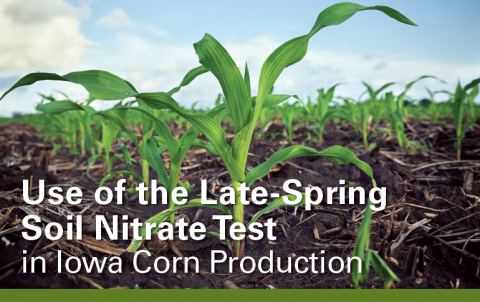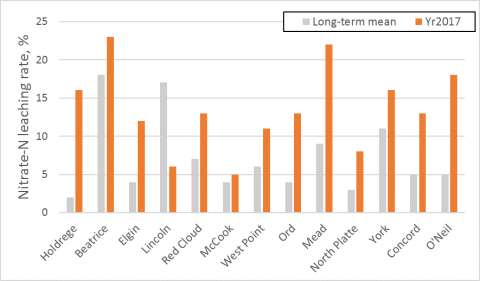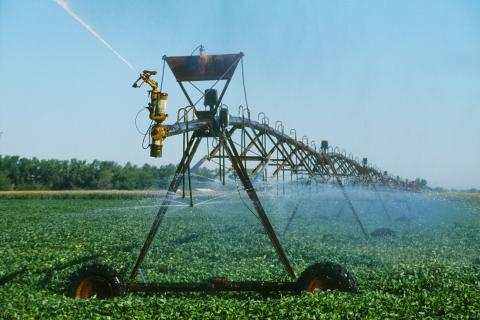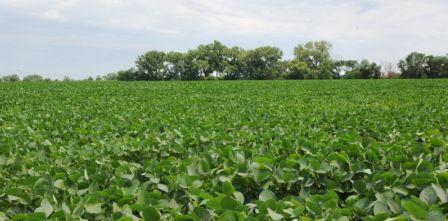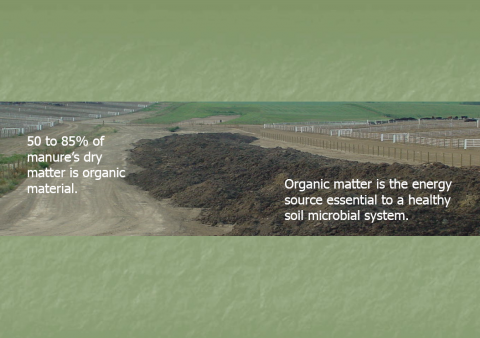Iowa Releases New Publication on Use of the Late Spring Soil Nitrate Test
June 8, 2017
Following heavy spring rains, farmers may be interested in testing for soil nitrogen availability. This article notes a new publication from Iowa State University on using the Late Spring Soil Nitrate Test (LSNT) as well as other options for assessing soil nitrate.
Risk of Nitrate Leaching Across Nebraska as of May 21, 2017
May 25, 2017
Following heavy spring rains UNL soil scientists model potential loss of nitrate-N to soil leaching, finding an average 14% loss from mid-April levels, with three sites with much higher losses.
Planting Soybean after Soybean (Part 2): In-Season Management Considerations
April 13, 2017
In Part 1 of this article, we look at considerations for planting soybean after soybean. In this article, Part 2, we share considerations for in-season management.
Planting Soybean after Soybean (Part 1): Planting Considerations
April 13, 2017
Farmers are increasing their soybean plantings for 2017, which likely means some are shifting to soybeans-after-soybeans. This article looks at what you should be considering at planting time as you consider changing your cropping sequence.
Starter Fertilizer: When is it Warranted?
April 12, 2017
As you evaluate the cost of inputs, consider this: Only focusing on expenses without subsequent income changes is misleading. The most profitable plan uses the most profitable inputs. Is a starter fertilizer one of those inputs? The authors look at university and grower research under various conditions to see when a starter fertilizer offers economic benefits.
Making Data-Driven Decisions on Soybean Inoculation
April 6, 2017
Farmers, agronomists, and researchers provide three steps to deciding whether to inoculate soybeans this spring.
Finding Win-Wins for Manure: Maximizing Soil Quality Benefits
March 6, 2017
Manure offers crop production wins by providing valuable nutrients and helping build soil organic matter and an active soil microbial community. Soils with organic matter levels on the low end of their typical range can benefit the most from manure applications that do not exceed the crop’s nitrogen requirements. Organic matter also improves soil aggregates which in turn helps increase infiltration of precipitation and irrigation water, improves water-holding capacity of the soil, and reduces runoff and erosion. Soils with these characteristics experience greater drought tolerance.
You Can Postpone Phosphorus, Potassium, and Zinc Fertilizer Applications When….
February 28, 2017
Soil testing and applying only the soil nutrients needed to produce your yield goal can provide a significant savings in fertilizer costs. Nebraska research shows growers can save as much as $52.12/acre for postponing phosphorus, potassium and zinc applications.

